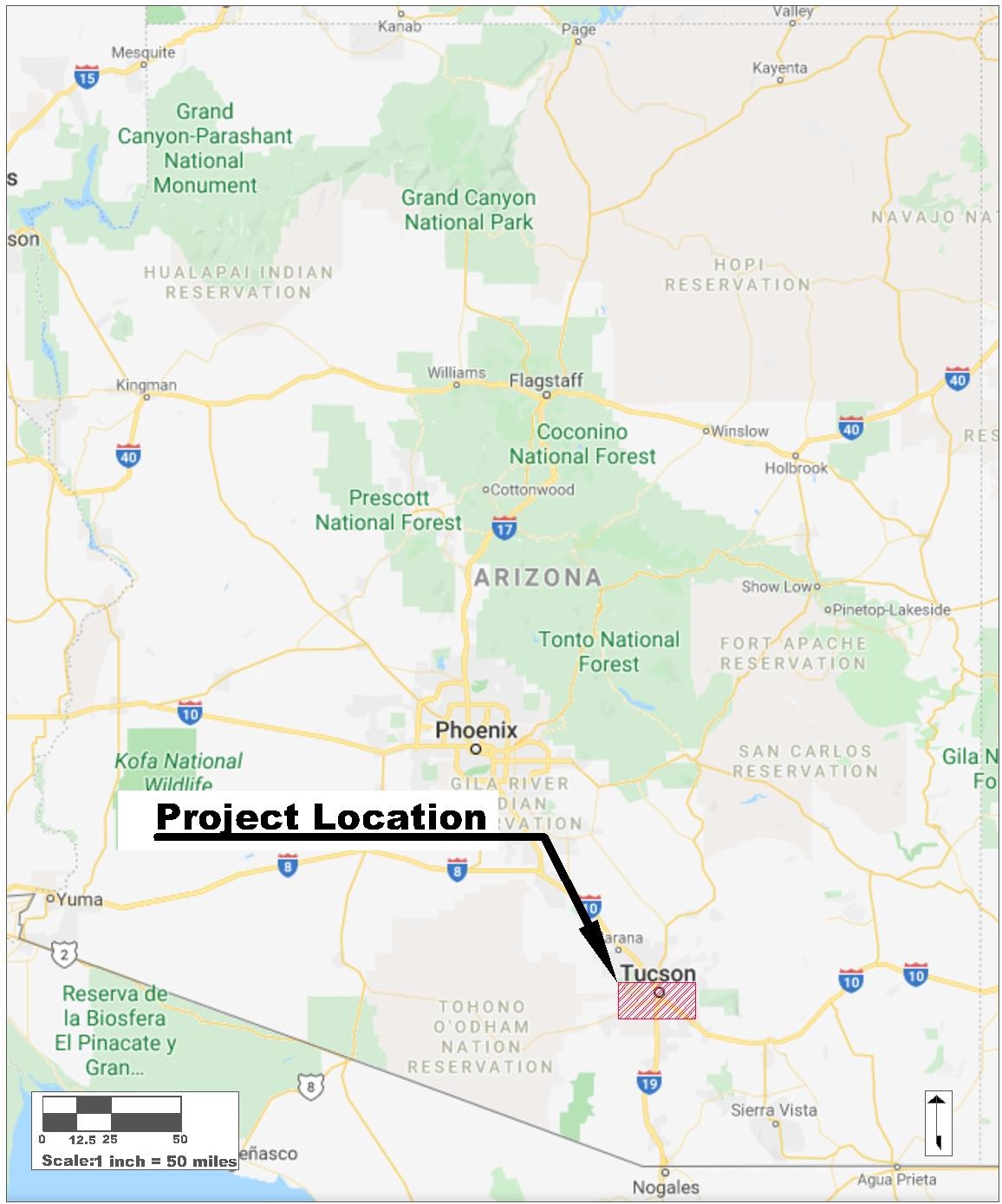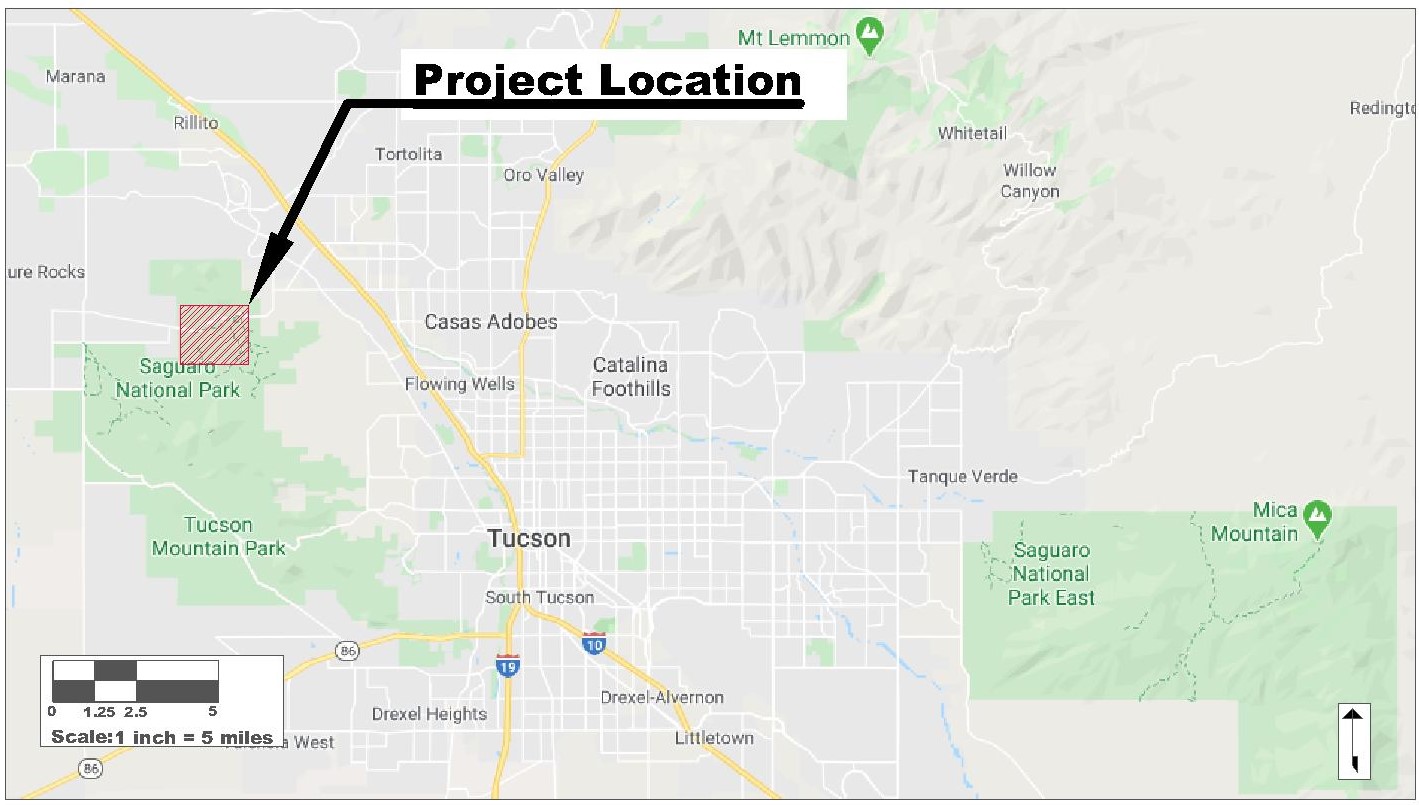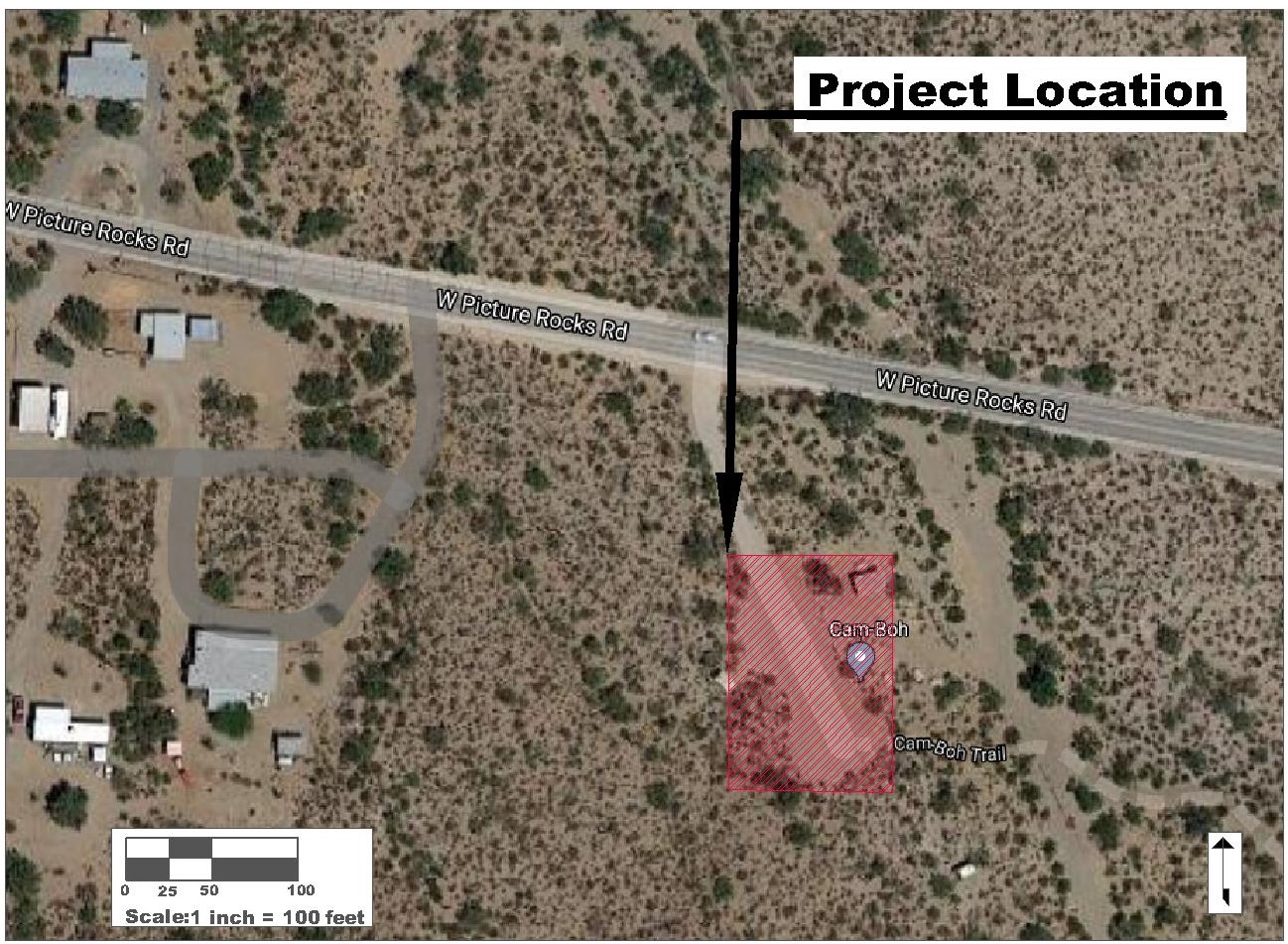Project Information
Location
Map of Arizona
The map of Arizona above displays that the project location, the red stripped box, is in Tucson which is in the southern area of the state.
The scale on the lower left corner of the Arizona map is 1 inch equal to 50 miles. The north arrow is located on the lower right corner.

Figure 1: Map of Arizona
Map of Tucson
The map to the left displays the greater Tucson area with a red stripped box displaying where the project location is at. The parking lot is being designed to compensate horse trailers and prevent "wildcat" parking on the sensitive desert landscape. Consideration during the design process will be taken due to the travel time being approximately five hours. The project is located in the Saguaro National Park near the North Tucson Mountain Park District. The site is located in the northwest region on the greater Tucson area, just to the west of the I-17.
The scale, located on the lower left corner of the image, on the Tucson area map is 1 inch equal to 5 miles. The north arrow is located on the lower right corner of the image.

Figure 2: Map of Tucson
Site Map
The parking lot will be design for the red stripped box seen in the map to the left. There are residential houses to the west of the park which these stakeholders should be taken into consideration for the project design. The parking lot will be located off of Picture Rocks Road in Saguaro National Park. The Cam-boh picnic area at the north end of the project location site, as well as, the restroom facilities will need to be considered for the design of the parking lot. To the east of the project location is a natural drainage wash which will be used as the primary stromwater drainage point for the design. The site will need to be evaluated for any protected vegetation including Saguaro cactus and Ironwood tree for purposes of increasing the parking lot footprint.
The scale, located on the lower left corner of the image, on the Site map is 1 inch equal to 100 feet. The north arrow is located on the lower right corner of the image.

Figure 3: Map of Site Location

